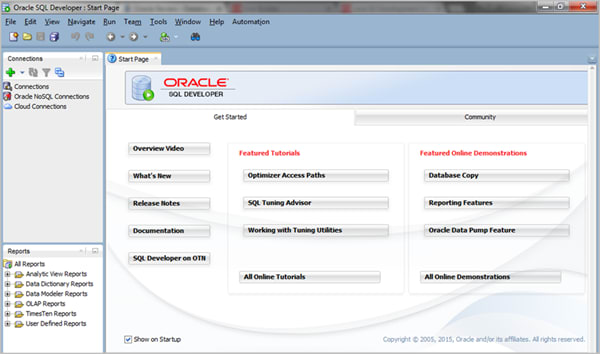

Connect to the 11.2 XE database as user SYS using the SYSDBA privilege. So, in order to conserve machine resources and memory, we just run the query again and write the data directly to the destination and bypass the data grid. To export data from your 11.2 XE database, perform the following steps: Create a directory \dumpfolder on the local file system for the DUMPDIR directory object.
#Exporting data from oracle sql developer 64 Bit#
Some query result sets are larger than others, and not all of us have 64 bit monsters to run our tools on. If you do force all of the rows back into the grid, you are going to be consuming a decent amount of memory. Step 4: Export the query output to Excel. Step 3: Select the Excel format and the location to export your file. To start, you’ll need to run your query in SQL Developer. This will force the rest of the records back into the grid.Īnd now you will see something like this Fetch time can often exceed execution time! Now with all records returned, Export will use the data in the grid instead of re-querying the database.Ĭlear as mud? But WHY does SQL Developer force the 2nd query execution? Steps to export query output to Excel in SQL Developer. So how do you get the rest of the records? The first fetch is often sufficient to answer most questions, but. What’s really most important to understand here is that that many of your queries return MORE data than what is shown on the initial display of the results grid. We consider this a low-level preference that shouldn’t be tweaked unless explicitly advised to do so by Oracle Support. You can read more of the JDBC nitty-gritty here if you’re morbidly curious. This means that SQL Developer will by default return the first 100 rows of your query. The default is ‘100.’ Fetch! SQL Developer ALWAYS comes back with the stick 🙂 The size of the batch is dependent on what you have ‘Sql Array Fetch Size’ set to. What good is running a query without seeing the results? However this last phase is what is known as a ‘fetch.’ Records are retrieved in batches. You asking for the data is usually an assumed part of running the actual query. The database tells the requestor that their query has executed. You don’t really care about how it gets your data, but it’s there to see in the plan.

It may spawn 1 or more processes to get the data, do all the sorts, merges, etc. Hopefully this shouldn’t take but a millisecond or two. About Press Copyright Contact us Creators Advertise Developers Terms Privacy Policy & Safety How YouTube works Test new features Press Copyright Contact us Creators. If it doesn’t already have one cached, it will build a new one. The database engine parses the query and identifies an execution plan. Running a query in Oracle has several distinct steps. What the heck is he talking about, fetched? The solution is to ensure all of the data has been fetched into the grid before you ask for the Export. The first step is to capture a 'snapshot' of the Microsoft SQL Server database. There are four main steps in the database migration process: Capture the Source Database. You ask SQL Developer to ‘Export.’ SQL Developer seems to start over by running the query again. Using Oracle SQL Developer Migration Workbench, you can quickly migrate your third-party database to Oracle. You wait patiently for your query and results to return.


 0 kommentar(er)
0 kommentar(er)
